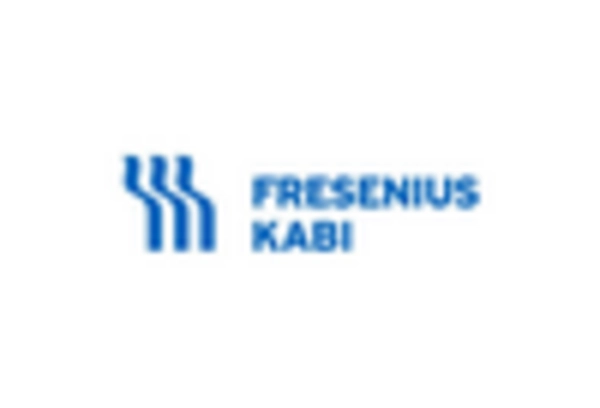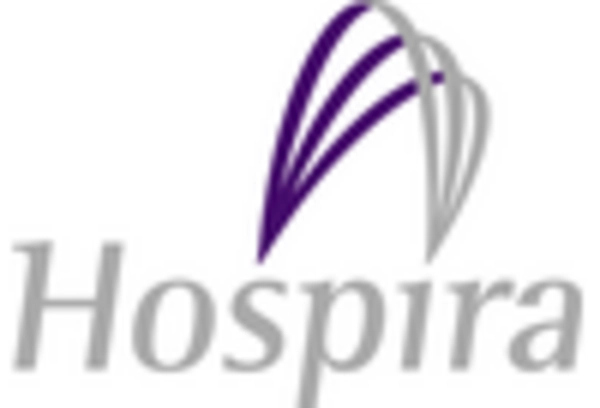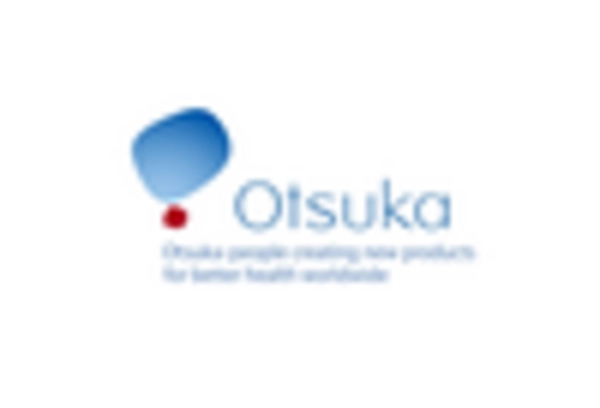Focus on Patient-Centric Care
The intravenous solution market is influenced by the growing focus on patient-centric care within the GCC healthcare system. As healthcare providers prioritize individualized treatment plans, the demand for tailored intravenous solutions increases. In 2025, it is anticipated that around 40% of healthcare facilities will adopt patient-centric approaches, emphasizing the need for customized intravenous therapies. This shift towards personalized medicine indicates a potential growth area for the intravenous solution market, as providers seek to enhance patient outcomes through more effective and targeted treatment options.
Increasing Healthcare Expenditure
The intravenous solution market is experiencing growth due to the rising healthcare expenditure in the GCC region. Governments and private sectors are investing heavily in healthcare infrastructure, which includes the procurement of intravenous solutions. In 2025, healthcare spending in the GCC is projected to reach approximately $100 billion, reflecting a growth rate of around 5% annually. This increase in funding allows for better access to advanced medical treatments, including intravenous therapies, thereby driving demand in the intravenous solution market. Furthermore, as healthcare facilities expand, the need for reliable and effective intravenous solutions becomes paramount, indicating a robust market potential.
Expansion of Healthcare Facilities
The intravenous solution market is positively impacted by the expansion of healthcare facilities across the GCC. New hospitals and clinics are being established to meet the increasing healthcare demands of the population. In 2025, it is projected that the number of healthcare facilities in the region will increase by 15%, leading to a higher demand for intravenous solutions. This expansion not only enhances access to healthcare services but also necessitates the availability of essential medical supplies, including intravenous solutions, to ensure effective patient care. Consequently, this driver plays a crucial role in shaping the market landscape.
Rising Number of Surgical Procedures
The intravenous solution market is bolstered by the rising number of surgical procedures performed in the GCC. As the region's healthcare facilities enhance their surgical capabilities, the demand for intravenous solutions to support anesthesia and postoperative care increases. In 2025, the number of surgical procedures is expected to rise by approximately 10%, driven by advancements in surgical techniques and an aging population. This trend indicates a growing reliance on intravenous solutions for fluid management and medication delivery during and after surgeries, thereby expanding the market's scope and potential.
Growing Prevalence of Dehydration and Electrolyte Imbalance
The intravenous solution market is significantly influenced by the growing prevalence of dehydration and electrolyte imbalance in the GCC. Factors such as extreme temperatures and lifestyle choices contribute to these health issues, necessitating effective treatment options. In 2025, it is estimated that around 30% of the population in the GCC may experience dehydration-related conditions, leading to an increased reliance on intravenous solutions for rehydration and electrolyte replenishment. This trend underscores the importance of intravenous therapies in clinical settings, as healthcare providers seek to address these common yet critical health challenges.

















Leave a Comment